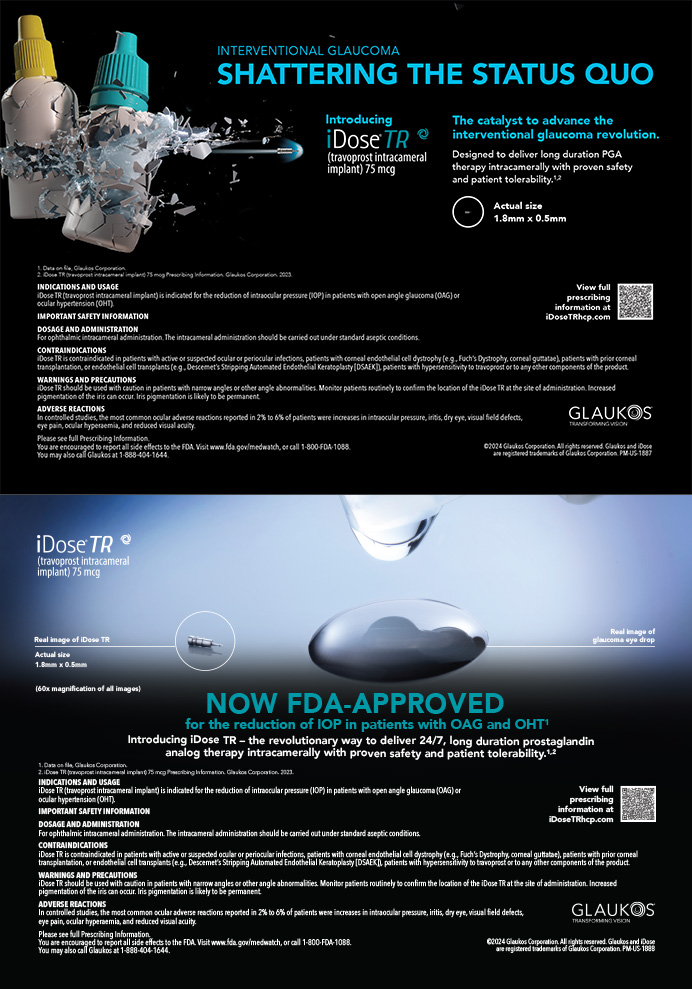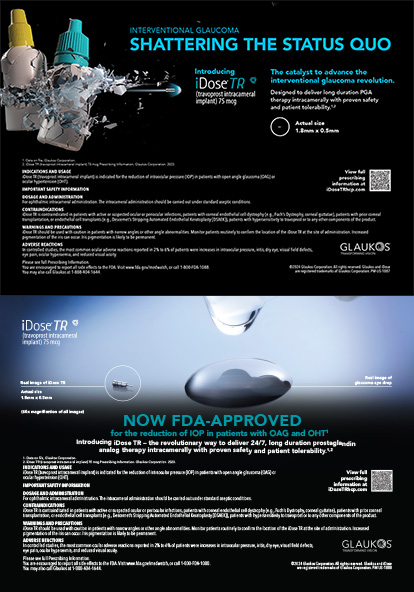
Cataracts remain the leading cause of preventable blindness in individuals older than 50 years of age. Although ophthalmology training programs have expanded globally, many residency-trained ophthalmologists are graduating without the surgical skills required to address cataracts.
The Advanced Center for Eyecare (ACE) Global operates a fellowship training center in Honduras for ophthalmologists from low-income countries. Nearly all of our fellows begin the program having completed a full ophthalmology residency, yet the majority arrive without having performed a single cataract procedure. To date, the most experienced among them had completed just 60 cases—well below the minimum required in any high-income country.
This is not an isolated phenomenon. A 2023 survey found that one in four ophthalmology residents in the European Union graduated without performing a single cataract surgery.1 Our experience at ACE Global suggests that the worldwide community has underestimated the scale and urgency of this surgical training gap.
RESPONDING WITH FELLOWSHIP AND DISTANCE MENTORSHIP
To address the training gap in cataract surgery, ACE developed a hands-on fellowship model designed to bring ophthalmologists to surgical competence in a safe, structured, and efficient manner.
During the COVID-19 pandemic, when travel restrictions halted in-person teaching, the challenge was to determine how to continue mentoring fellows without being together physically. That is when our distance surgical mentorship (DSM) model emerged.
The idea of remote surgical collaboration was not new. Other surgical specialties had already adopted versions of it. What was novel was adapting the approach to cataract surgery using widely available digital tools. With grant support from Alcon, we installed an Ngenuity 3D Visualization System (Alcon) at a government hospital in Honduras, allowing real-time streaming from the operating microscope.
WHAT DSM IS—AND IS NOT
DSM is not designed for ophthalmology residents. In residency, the risk of complications and the need for surgical rescue mean that a live attending surgeon must be physically present. DSM is used only after a fellow has developed foundational competency and can independently manage complications.
At ACE, fellows complete 8 months of in-person mentorship and 250 to 300 cataract cases before transitioning to independent operating sites. At this stage, they are introduced to DSM—not as a replacement for training but as a tool for continuation and reinforcement and for helping fellows bridge the gap from a training environment to independent surgery.
Inside the DSM OR
Briefly, the system works as follows:
- A cell phone adapter mounted on the operating microscope streams the surgical field (Figure 1). We prefer the Microrec (Custom Surgical).
- Fellows wear wireless headphones for two-way communication.
- A second cell phone streams the phaco machine screen or a wide view of the surgeon’s hands.
- Mentors log on via Zoom (Zoom Communications) and coach fellows in real time (Figure 2).
- Sessions are scheduled through a shared volunteer calendar, allowing mentors to sign up for 2- to 4-hour blocks.

Figure 1. Live intraoperative view, as seen by a remote mentor during a DSM session.

Figure 2. Microscope-mounted smartphone adapter used to stream the surgical field to remote mentors.
This setup creates a virtual OR where mentors can see, hear, and respond dynamically—without traveling or interrupting their practices (Figure 3).

Figure 3. Composite view from a DSM session showing the perspectives that create a virtual OR to enable real-time remote surgical guidance.
Measurable Outcomes
In a 2021 study, we monitored four fellows with baseline Ophthalmology Surgical Competency Assessment Rubrics scores averaging 65. Over the course of 100 remotely mentored cases, those scores rose to 92. Case times dropped from 45 to 20 minutes.2
These findings suggest that DSM can substantially improve technical performance and accelerate surgical efficiency—critical when millions of patients are awaiting sight-restoring surgery.
Onboarding Mentors and Ensuring Safety
Volunteer mentors must have at least 5 years of experience after training. New mentors begin by observing an experienced colleague during a DSM session to learn the necessary communication adjustments—especially how to use precise verbal descriptors in lieu of gestures.
Although some DSM mentors rotate, many develop long-term professional relationships with their mentees. Fellows often begin by working with mentors who have visited in person and continue connecting via DSM throughout the year.
We encourage new mentor-fellow pairs to meet briefly on Zoom before their first session to establish a familiarity with each other. Even when mentors participate in DSM only a few times, their influence can endure. Several graduates from years past still consult their original mentors for case advice.
DSM, in this sense, becomes a bridge not only between geographic regions but also between stages of surgical development.
TOWARD A SCALABLE GLOBAL PLATFORM
DSM currently runs on basic tools, but the core model is highly scalable. The adapter costs approximately $2,000. With services such as Starlink (Starlink Services) providing reliable internet service even in remote areas, bandwidth is increasingly accessible.
The greatest obstacle is structural, not technical. Many organizations want to replicate the model but lack an integrated solution. ACE’s goal is to build a secure, HIPAA-compliant, and multilingual portal that can do the following:
- Handle scheduling and onboarding;
- Guide new mentors through the process;
- Support case streaming and encryption;
- Enable video storage and performance feedback; and
- Integrate AI-based scoring to assess participants’ surgical technique and generate structured evaluations.
Ultimately, we hope to contribute to the creation of a global competency standard—something that does not yet exist for cataract surgeons but could drive major improvements in safety and accountability.
CALL FOR COLLABORATION
ACE is seeking technical collaborators, funding partners, and experienced surgeons who want to participate in our work. By removing the need for travel and leveraging tools already in our hands, DSM offers a scalable, cost-effective solution to one of ophthalmology’s most persistent challenges. Our hope is to enable any institution—nonprofit or academic—to use this model and, in doing so, help reduce avoidable blindness on a global scale.
1. Ní Dhubhghaill S, Sanogo M, Lefebvre F, et al. Cataract surgical training in Europe: European Board of Ophthalmology survey. J Cataract Refract Surg. 2023;49(11):1120-1127.
2. Barber KM, O’Connor S, Ponce J, et al. Distance surgical mentorship in cataract phacoemulsification using a 3D visualization system. Intl J Surgical Education. Published online May 14, 2022. doi:10.5281/zenodo.14838368




